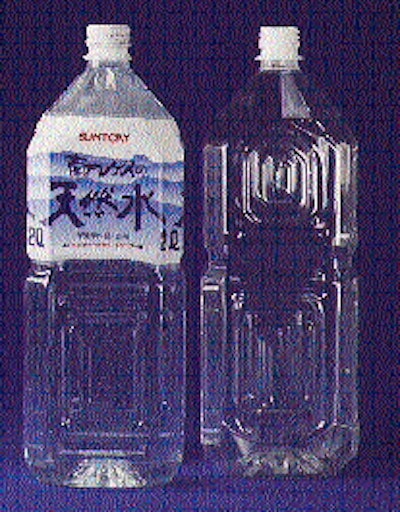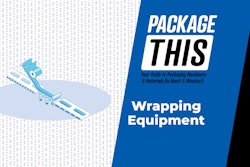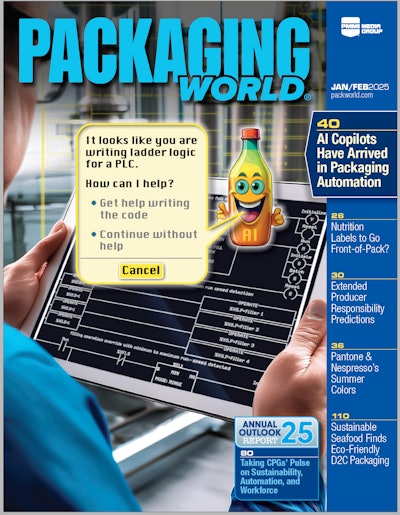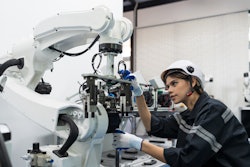Commercial blowmolders wishing to provide food and beverage marketers with polyethylene terephthalate bottles that can be hot-filled at up to 95°C (203°F) now have a new option: the Monotherm system from Krupp Corpoplast (Hamburg, Germany). Developed jointly by Krupp and Mitsubishi Plastics (Tokyo, Japan), the first Monotherm system to go into commercial production is at a Mitsubishi facility in Japan. With Monotherm, Krupp replaces its Corpotherm heat-set PET system. The downside to the Corpotherm system is that it required two blowing wheels, which made it complex and costly. The Monotherm, as its name suggests, requires just one blowing wheel instead of two, so it's simpler to operate and occupies less plant space. It's also more economical than Corpotherm (see Table 1). Compared to a conventional blow molder producing carbonated soft drink bottles, the Corpotherm heat-set process costs 73% more, while Monotherm bottles are 56% more costly. Dr. Michael Koch described the Monotherm system in a paper delivered at Bev-Pak Americas '95, held last April and sponsored by Directions 21, Inc. (Sarasota, FL). He was then general sales manager at Krupp; now he's with Husky Injection Molding Systems (Bolton, Ontario, Canada). Bottled water is among the applications for which this technology is suitable, though Japan may be the only place that's true. Apparently, water is not hot-filled anywhere else. Says Koch, "In Japan they want to eliminate any chance for water-borne health problems." Suntory of Osaka, Japan, is one bottled water marketer filling bottles produced on the Monotherm system operating at Mitsubishi. Suntory uses the heat-set container to hot-fill its mineral water in one-way 2-L bottles with a 28-mm neck finish. Neither Suntory nor Mitsubishi representatives could be reached for comment, so it's difficult to compare Monotherm with other heat-setting technologies in this particular application. One obvious advantage Suntory gains is that with an additional supplier in the game, pricing is more likely to remain stable. Mitsubishi management saw an opportunity in heat-set PET bottles, but they didn't want to be restricted by licensing arrangements that typically come with other heat-set technologies that are available. So the firm joined with Krupp in developing new technology. Other suppliers, too While some of Suntory's mineral water goes to market in Monotherm bottles blown by Mitsubishi, the firm relies on other makers of heat-set bottles, too. In fact, in the photo shown in this story, the filled and labeled bottle is from Toyo Seikan (Tokyo, Japan) while the empty one is from Mitsubishi. Though they appear virtually identical, they're marked by subtle differences in design. Both, however, incorporate the sidewall panels that allow the bottle to remain stable despite the internal vacuum pressure that develops as the hot-filled water cools. Bottled juice, teas and other "New Age" beverages are another category that Krupp and Mitsubishi had in mind when they developed Monotherm. Koch showed his Bev-Pak audience data indicating that while sales of carbonated soft drinks in Japan are down, New Age drinks are up. According to the numbers Koch showed, over 75% of all nonalcoholic drinks sold in Japan in '94 were teas, juices, waters and other beverages that are filled hot. In 1990, these products represented only 60% of nonalcoholic drinks sold in Japan. The other application Krupp is taking a hard look at is a returnable/refillable PET bottle. This would be appealing not only in Japan but in Europe and South America as well. For the U.S. market, returnable/refillable bottles are unlikely, to say the least. But the continued growth of the New Age category could hold some potential for Monotherm technology in the U.S., particularly if the product had a fruit content high enough to require bacteria-killing temperatures in the 90 to 95°C range. A "technology package" So what does the Monotherm system consist of? Koch describes it as a "technology package" that can be added onto a variety of standard Krupp stretch/blow molding machines. Early in the development Krupp hoped that Monotherm could be retrofitted onto existing equipment in the field. In principle it can, although Koch says it's probably best not to. "It takes quite some effort, so it makes more sense to install it in a new machine," says Koch. Monotherm production differs slightly depending upon which Krupp blow molder is used. The Model B177E was the example cited by Koch. Production begins as PET preforms are fed to the heating wheel. First the preforms are placed on a transport mandrel. These mandrels are independent of the heating wheel and function almost like the pucks in an aerosol filling system. Each one carries a preform through the entire reheat and blow process and then returns to the beginning of the loop for another cycle. The mandrels enter the heating wheel by means of transfer wheels and are held in place throughout the heating process by magnets. Once seated in its station on the heating wheel, the mandrel takes the preform past 15 heater boxes fitted with quartz lamps that deliver infrared radiation to heat the preform to between 100 and 120°C (between 212 and 248°F), the approximate temperature at which blowing will occur. Threaded preform necks, however, are shielded from the heat so they will not deform. Then comes an unheated section where equilibration occurs. In other words, the heat absorbed by the preform penetrates to the inside of the preform sidewall. After equilibration, the preform passes another nine heater boxes and then equilibrates again. Only then does the preform on its mandrel leave the heating wheel and, through a transfer wheel, enter the blow wheel. As soon as the transport mandrel is captured by the blow wheel, the blow mold closes around the preform and blowing begins. Here Monotherm differs in one key way from standard PET bottle making. As with that process, the stretch rod stretches the preform vertically, blown air stretches the material in the hoop direction, and then the stretch rod recedes. But in the Monotherm process, the stretch rod emits cooling air before it recedes. This is essential because the molds are heated. If not for the cooling air, the bottles would collapse when the molds opened. Another crucial element in the Monotherm system is the heat-conditioning, or heat-setting, pattern. As shown in Diagram A, there are three distinctly different conditioning areas. The neck insert colored blue is water-cooled to between 10 and 20°C (between 50 and 68°F). This cool temperature keeps the neck from deforming. The neck is opaque white because, in a process that follows preform injection molding, it's been thermally crystallized but not oriented. Base and sidewall inserts in the mold are heated with ethylene glycol. The base area reaches temperatures between 70 and 130°C (between 158 and 266°F). This allows material that is still amorphous, particularly around the center, to thermally crystallize as much as possible without turning white. The sidewall insert is hottest of all, between 140 and 170°C (between 284 and 338°F). This ensures the highest possible thermal crystallization of the oriented material, enabling the sidewalls to withstand hot filling to 95°C (203°F). As Krupp continues to develop its Monotherm technology, efforts at lightweighting are underway, with 65 g set as the target. The Suntory bottle now in the Japanese marketplace weighs 69 g. Krupp also is testing blends of PET and polyethylene naphthalate (PEN), the high-performing newcomer to the resin scene that offers significantly greater barrier properties, heat resistance and mechanical strength than PET (see PW, July '95, p. 26).

























